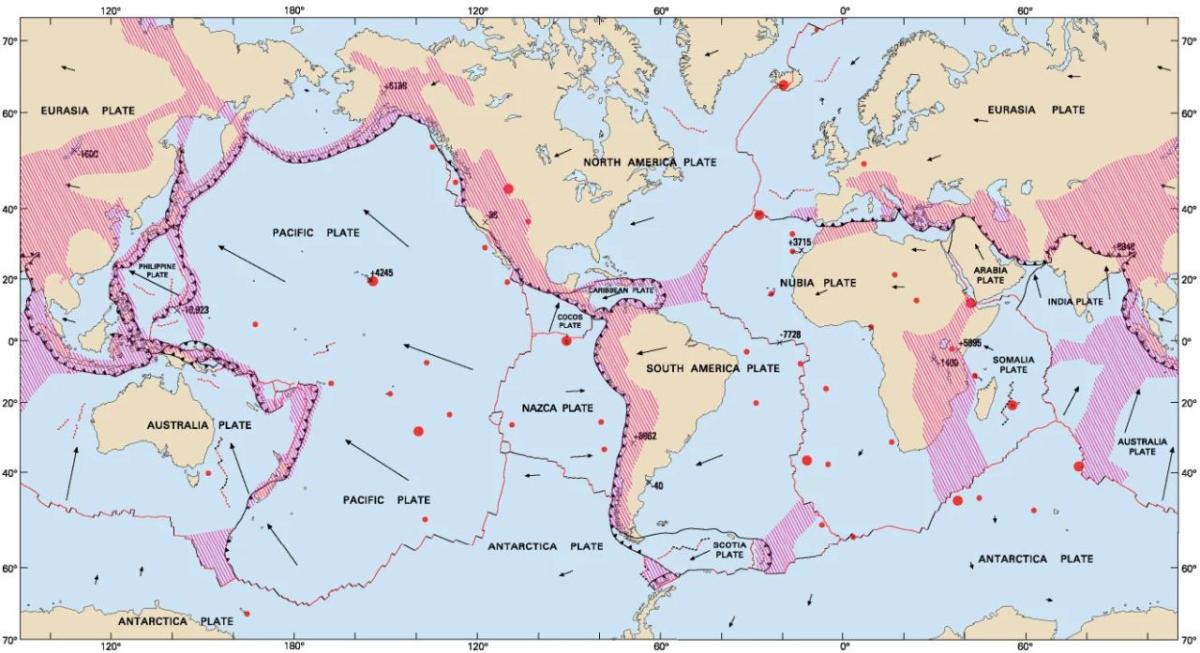On the Rocks: Combating Climate Change With Geochemistry
by Lisette Cooper, CFA, Vice Chair, Fiduciary Trust International

Next time you crack open a carbonated beverage, consider the origin of those bubbles inside the can. Their source might mean you’re participating in the fight against climate change.
Most of us are familiar with how greenhouse gas emissions—mainly carbon dioxide—increase the amount of heat trapped within earth’s atmosphere, warming the planet and changing weather patterns. There’s an array of methods and technologies at various stages of development that have shown promise in offsetting emissions. The problem today is that the reach of these mitigation strategies is much too small. Hence the opportunity for forward-looking investors to participate in scaling new solutions.
Burying Carbon for Good
Direct air capture (sometimes called DAC) is a pioneering method for carbon reduction. At the risk of oversimplification, the initial process involves collecting carbon from air flow and then using heat to condense it. Climeworks is a 14-year-old company that has developed direct air capture and serves several distinct markets, including putting the sparkle in sparkling water.1,2
Recently, Climeworks has developed a new application of its technology. This January, Climeworks fired up an installation in Iceland where the captured carbon is pumped into bedrock for storage. There are a few ingredients required for this approach to direct air capture: basalt (a type of igneous rock), sea water, and energy. After heating, carbon is mixed with sea water and then pumped underground by CarbFix, an operational partner to Climeworks.3 There, contact between this mixture and basalt creates a chemical reaction binding them together, which keeps the carbon sequestered deep underneath Iceland for millennia.
While Climeworks doesn’t publicly disclose the minerals that result from this binding reaction, I believe the combination of carbon dioxide, calcium and magnesium would produce dolomite and perhaps other carbonate minerals. In other words, Climeworks is taking carbon out of the atmosphere and turning it into rock!
A Gigaton-sized Problem Meets a Global Opportunity Set
This is an impressive application of geochemistry, and the timing couldn’t be more critical. The Icelandic prototype that successfully went online in January should be able to remove about 4,000 metric tons of carbon per year. Globally, we will need to reduce or remove more than 40 gigatons—that’s 40 billion metric tons—of carbon per year to offset our annual emissions.4 Add in all the other greenhouse gases and we’ll need to offset more than 50 gigatons per year to reach net zero emissions.5
That may seem like an impossible gap to span, and any realistic path to net zero is going to require the hard work of cutting greenhouse gas output as much as possible. But direct air capture can serve as a supplemental solution to emissions reduction, and the team in Iceland is already building a facility designed to remove 36,000 metric tons of carbon per year, with a roadmap to megaton and then gigaton removal by 2050.
For me, this is very exciting. Perhaps my background as both an isotope geochemist and an investment manager enables me to see the potential in direct air capture. It could have a profound positive impact on the path to net zero.
Thinking about the geological features of our planet, there are many other places where this method could be replicated. Hawaii checks all the requisite boxes. Large segments of the Pacific Rim would probably qualify. Just look at a map of tectonic hotspots to begin identifying targets.
Variations on a Carbon Capture Theme
And just as we’re not bound to one location, we’re also not limited by one approach. Climeworks has partnered with an Omani firm on a similar process.6 The major difference comes down to the rocks. Oman has an abundance of peridotite, which may be more familiar as the source of the birthstone peridot. It also dominates the composition of earth’s upper mantle. Thanks, again, to tectonic activity, peridotite has been forced toward earth’s crust in Oman. Like basalt, peridotite is a great candidate for binding carbon underground.
Not enough geothermal energy at a location with ideal mineral composition? That’s not a dealbreaker. Alternative low-carbon energy sources can be substituted anywhere lacking in this key factor. The facilities could employ smaller nuclear power generators, for example.
The Capital to Combat Climate Change
We just might be entering a golden age for experimentation and mobilization in the fight to manage climate change. Western governments are beginning to commit serious capital to the cause, and major corporations are willing to pay a premium for carbon credits from the startups pursuing these promising new methods.
These capital investments will draw entrepreneurship into new and creative solutions, like Climeworks and CarbFix, that may have unanticipated benefits at a scale we haven’t seen since the push to put a man on the moon. Direct air capture has already given us a better way to produce fizzy beverages.
The investment opportunity could be arrived at via publicly traded companies with the foresight to capitalize these startups. There may also prove to be more direct opportunities to invest with impact-oriented private equity funds.
I think these developments provide great cause for optimism, and not a moment too soon. We’ll keep our eyes wide open for emerging opportunities to make a positive environmental impact and a strong financial return.
About Fiduciary Trust International
Fiduciary Trust International, a global wealth management firm headquartered in New York, NY, has served individuals, families, endowments and foundations since 1931. With over $90 billion in assets under management and administration as of March 31, 2023, the firm specializes in strategic wealth planning, investment management and trust and estate services, as well as tax and custody services. The New York-based firm and its subsidiaries maintain offices in Coral Gables, FL, Boca Raton, FL, St. Petersburg, FL, Radnor, PA, Lincoln, MA, Los Angeles, CA, San Mateo, CA, San Francisco, CA, Washington, DC, Wilmington, DE, Reston, VA, and Atlanta, GA. For more information, please visit fiduciarytrust.com, and for the latest updates, follow Fiduciary Trust International on LinkedIn and Twitter: @FiduciaryTrust.
About Franklin Templeton
Franklin Resources, Inc. [NYSE:BEN] is a global investment management organization with subsidiaries operating as Franklin Templeton and serving clients in over 150 countries. Franklin Templeton’s mission is to help clients achieve better outcomes through investment management expertise, wealth management and technology solutions. Through its specialist investment managers, the company offers specialization on a global scale, bringing extensive capabilities in fixed income, equity, alternatives and multi-asset solutions. With more than 1,300 investment professionals, and offices in major financial markets around the world, the California-based company has over 75 years of investment experience and over $1.4 trillion in assets under management as of June 30, 2023. For more information, please visit franklintempleton.com and follow us on LinkedIn, Twitter and Facebook.
On the Rocks_Combating Climate Change with Geochemistry.pdf
1 "Climeworks’ Journey.” Climeworks.com
2 “Climeworks pioneering air-captured CO2 for drinks carbonation.” Jasi, Amanda. The Chemical Engineer. December 21, 2018.
3 “Direct Air Capture.” Carbfix.com.
4 “Global atmospheric carbon dioxide levels continue to rise.” NOAA Research News. November 14, 2022.
5 “Hot To Avoid A Climate Disaster.” Gates, Bill. 2021.
6 “Rare Mantle Rocks in Oman Could Sequester Massive Amounts of CO2.” Fox, Douglas. Scientific American. July 1, 2021

